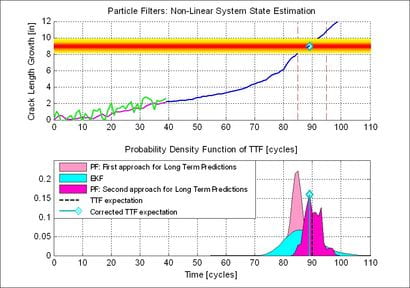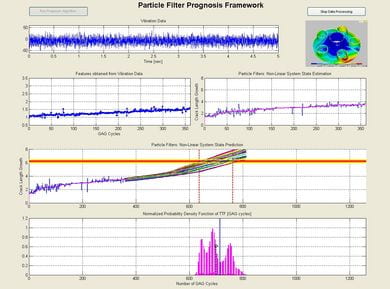
|

|
References
- A brief description of the proposed PF prognosis approach.
- “A Particle Filtering-based Framework for On-line Fault Diagnosis and Failure Prognosis,” Ph.D. Thesis Proposal, Georgia Institute of Technology, approved on October 2006.
- Orchard, M., Wu, B., and Vachtsevanos, G., “A Particle Filter Framework for Failure Prognosis,” Proceedings of WTC2005, World Tribology Congress III, Washington D.C., USA, 2005.


